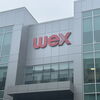Your property's environmental well-being will affect its market value in multiple ways
Trichloroethene. Dichloreothene. Tetrachloroethene. These terms were not covered in Real Estate 101. But they should have been and, in the not too distant future, they probably will be. They are different chemicals and breakdown products used in the dry cleaning industry. These chemicals, and many other compounds, can be found in the ground, water and air and are discovered through various rounds of environmental testing. These environmental tests have monumental impacts on real estate transactions today and should be understood by property owners and buyers alike.
Nowadays, almost every transaction will require some level of environmental inquisition or testing. Sometimes a buyer requests or requires environmental background testing but, more often, it is the lending organization that orders it. The lender wants to confirm the asset is clean, insurable and can be resold. At its most basic level, environmental assessments can be a questionnaire for the owner to fill out. These questionnaires have to be answered honestly and in full to the best of the owner's knowledge. They typically cover the history of the building and ask about neighboring properties. This information is reviewed by the lender and, if any red flags show up — former uses such as a gas station or a dry cleaner — further testing will likely be required.
The next level of testing is called a Phase I environmental site assessment. For this level of testing, a third-party environmental consulting firm is typically hired. The standards for this test are set by the U.S. Environmental Protection Agency and are widely accepted by all lending agencies. The purpose of the Phase I is to identify recognized environmental conditions such as any hazardous substances or petroleum products currently or formerly at a site. In other words, they're looking for hints of potential contamination. At this level of assessment, they typically will not do physical testing. Rather, it's more of an inspection and research of the property to determine if further physical testing is required. Consultants will tour the property and review historical and municipal records.
When a Phase I is ordered, transactions can get into trouble. The Phase I can be an unexpected expense, which is typically paid for by the buyer. However, if the Phase I uncovers any issues that require further testing, then the responsibility shifts to the seller for some or all of the costs. Unexpected expenses can wreak havoc on a tentative real estate transaction so this is when an entirely new round of negotiations can begin. As an aside, any SBA 504-backed sale (an attractive owner/occupant financing program) will require a Phase I.
The next round of testing is called a Phase II site assessment. This round is more invasive and will often involve physical collection and testing of soils, vapors, building materials and ground water. Based on the Phase I results, the environmental consulting firm can target specific hazards and plan testing accordingly. For example, if the Phase I report suggests the property was formerly used as a dry cleaner, the Phase II testing would focus on looking for tetrachloroethene, a chemical used in dry cleaning. The Maine Department of Environmental Protection sets target thresholds that need to be met for residences and commercial properties. If the amount of tetrachloroethene is higher than the DEP standards, remediation will be ordered. Remediation, of course, is an additional layer of time and expense.
Beyond the health implications of having an environmentally suspicious property, there is a real financial impact as well. Given the lending protocol to ensure clean properties, any site that is deemed "dirty" in effect cannot be resold. Spending a few thousand dollars on proactive testing and remediation can bring stability and promote a smoother resale process.
Along those lines, Maine lawmakers developed what is known as the Voluntary Response Action Program. This program allows a property owner or lender to develop a plan to assess and review a property. The goal is to either receive a "No Further Action Assurance" letter or, if there are contaminants found, work with the DEP to remediate and ultimately receive a Certificate of Completion. Both offer the property owner liability relief and will ensure a property can be resold on the open market without further action or involvement from the DEP.
Too often owners assume their properties are clean because, on the surface, it appears so. But the definition of "clean" is a varied and complex one. Today's lending environment can be challenging, and environmental issues are often a major sticking point. I encourage my seller-clients to be as proactive as possible and think about these things before they become problems. Trichloroethene, dichloreothene and tetrachloroethene are big, confusing words. But if you understand the impact they can have on your real estate holdings, you'll have a much cleaner resale process — pun intended.










Comments